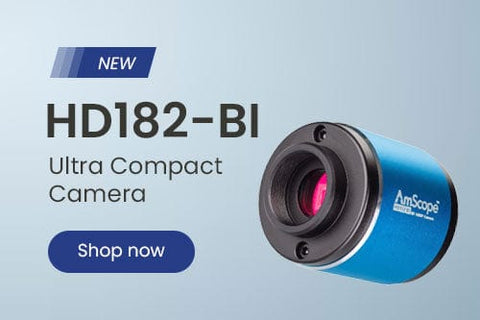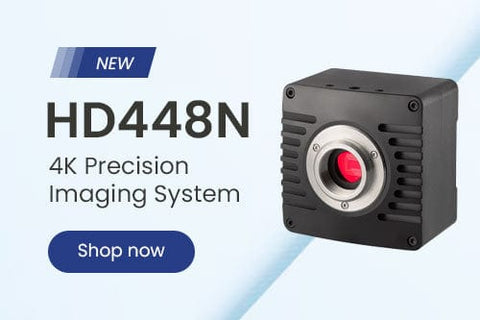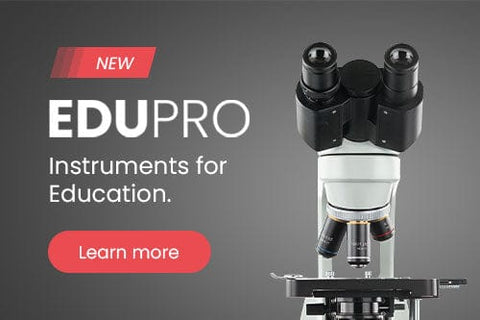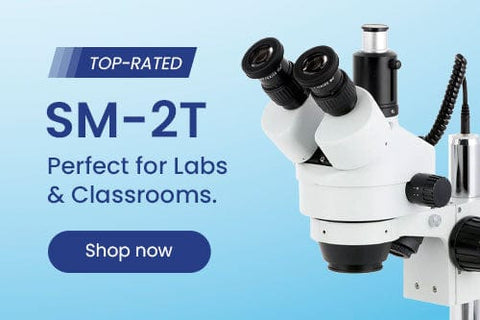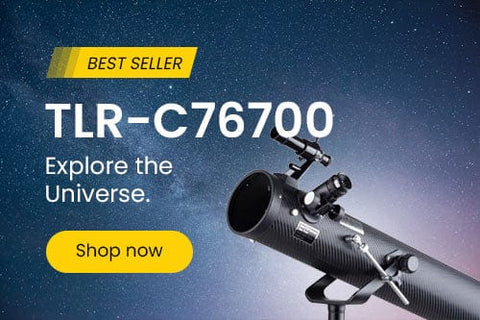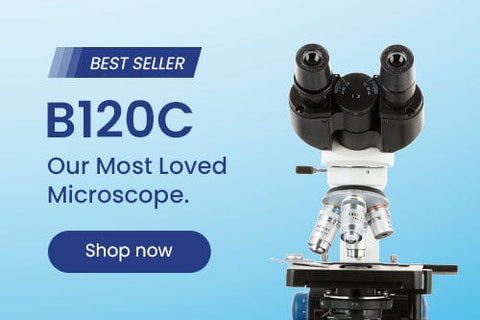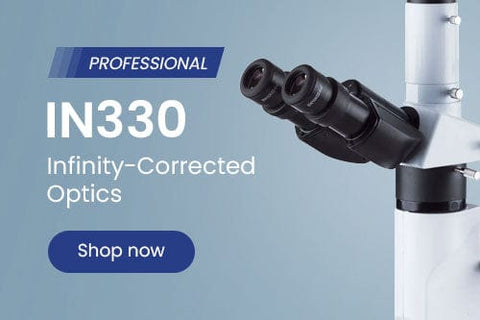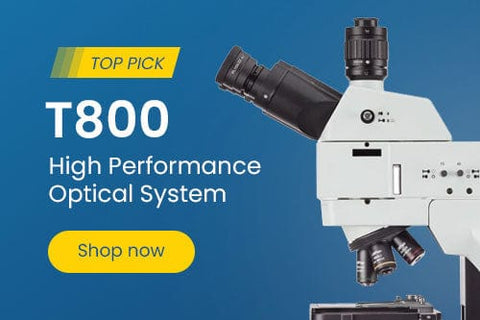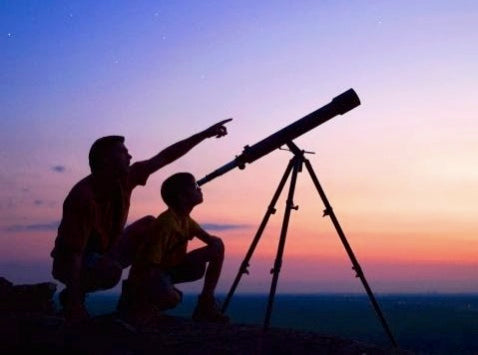- Microscopes
- Cameras
- Lab Supplies & Equipment
- Shop By Brand
- Lab Supplies by Category
- Analyzer Consumables
- Balances
- Bags
- Beakers
- Bench Scale Bases
- Bottles
- Bottletop Burettes
- Bottletop Dispensers
- Boxes
- Blank Microscope Slides & Cover Slips
- Blood Collection
- Caps
- Carboys
- Centrifuges
- Centrifuge Tubes
- Cold Storage
- Containers
- Cryogenic Vials
- Culture Tubes
- Cylinders
- Dispensers
- Digital Dry-Baths
- ESR Products
- False Bottom Tubes
- Flat Bottom
- Funnels
- Gel Documentation
- Glassware
- Glass Test Tubes
- Histology
- Homogenizers
- Hotplates-Stirrers
- Inoculation Loops and Spreaders
- Liquid Handling Products
- Manual-Electronic Pipettors-Pipettes
- Microscope Slides
- Overhead Stirrers
- Pipette Controller (Serological Filller)
- Pipette Tips
- Plastic Test Tubes
- PCR Tubes, Strips & Plates
- Racks
- Repeater Pipettor
- Rockers
- Rotary Evaporators
- Serological Pipettes
- Shakers
- Spectrophotometers
- Syringe Tips
- Sample Tubes
- School/Classroom Supplies
- Screwcap Test Tubes
- Self-Standing
- Test Tube Racks
- Test Tubes & Vials
- Transport & Storage Tubes
- Thermal Mixers
- Transfer Pipets
- Urinalysis
- Vacuum Pumps
- Weighing Dishes
- Lab Equipment
- Balances
- Bench Scale Bases
- Centrifuges
- Digital Dry-Baths
- Gel Documentation
- Homogenizers
- Hotplates-Stirrers
- Overhead Stirrers
- Pipettors
- Rockers
- Rotary Evaporators
- Shakers
- Serological Pipettes
- Spectrophotometers
- Thermal Mixers
- Vacuum Pumps
- Liquid Handling Products
- Manual-Electronic Pipettors-Pipettes
- Pipette Tips
- Racks
- Pipette Fillers-Controllers
- Repeater Pipettor
- Syringe Tips

Cost effective products and solutions designed to improve laboratory efficiency, safety and results.
SHOP BENCHMARK SCIENTIFIC >
- Slides & Accessories
- Slides
- Cameras
- Illuminators
- Adapters
- Eyepieces / Objectives
- Bulbs
- Magnifying Lamps
- Monitors and Tablets
- View All Categories
- Adapters
- DSLR Adapters
- USB Camera Adapters
- Ring Light Adapters
- Power Adapters
- Barlow Lens
- Books & Experiments Cards
- Bags & Cases
- Bags
- Cases
- Cameras
- Circuit Board Holders
- Cleaning Kits
- Condensers
- Darkfield
- Phase Contrast Kits
- Polarizing Kits
- Dust Covers
- Eye-Guards
- Eyepieces
- 20mm
- 23mm
- 30mm
- 30.5mm
- Filters
- Microscope Filters
- Illuminator Filters
- Fluorescence Kits
- Conversion Kits
- Filter Cubes
- Focusing Racks
- Fuses
- Illuminators
- Bulbs
- LED Illuminators
- Fiber Optic Illuminators
- Fluorescent Illuminators
- Ring Lights
- Stand Lights
- Goosenecks
- Gooseneck Attachments
- Immersion Oils
- Loupes
- Magnifying Lamps
- Clamp Lamps
- Desktop Lamps
- Rolling Stand Lamps
- Mechanical Stages
- Monitors and Tablets
- Calibration Slides & Stage Micrometers
- Stage Warmers
- Stain Kits
- Stands
- Articulating Arm Stands
- Boom Stands
- Table Stands
- Tweezers
- Other Accessories
- Shop By Industry
- Shop By Industry
- Botany
- Agronomy & Forestry
- Horticulture
- Phytopathology
- Chemistry
- Biochemistry
- Biotechnology
- Cannabis
- Pharmaceutics
- Consumables
- Beer & Wine
- Cosmetics
- Food & Beverage
- Electronics
- Circuit Boards & General Electronics
- Mobile Phone Repair
- Semiconductors & Wafers
- Environmental
- Asbestos
- Ecosystem Research
- Mud Logging
- Soil Treatment
- Water Treatment
- Forensics
- Ballistics
- Fingerprint Analysis
- Genetic Identification
- Hair & Fiber Analysis
- Handwriting Analysis
- Industrial
- Aerospace
- Automotive
- Dental Lab & Production
- Glass Industry
- Industrial Inspection
- Mechanical Parts
- Paper Industry
- Petrochemical
- Plastics
- Printing Industry
- Quality Assurance & Failure Analysis
- Textiles & Fibers
- Tool Making
- Wood Production
- Jewelry & Gemology
- Engraving
- Gemology
- Jewelry Repair
- Stone Setting
- Watch Repair
- Hobby
- Coins & Collecting
- Stamps
- Modeling & Assembly
- Sculpting
- Repair
- Telescopes
- Metallurgy
- Archaeology
- Geology
- Mining
- Petrology
- Medical & Microbiology
- Anatomopathology
- Bacteriology
- Biochemistry
- Cell Culture
- Cytology
- Dental Microbiology
- Dermatology
- Dissection
- Gout & Rheumatology
- Hair & Fiber Analysis
- Hair Transplant
- Fluorescence
- Hematology & Live Blood Analysis
- Histopathology
- Mycology
- Medical Devices
- Microsurgery
- Neuropathology
- Oncology
- Parasitology
- Pathology
- Semen Analysis
- Virology
- Veterinary & Zoology
- Breeding & Semen Analysis
- Entomology
- Fecal Smears & Floats
- Marine Biology
- Ornithology
- Veterinary Medicine
- Zoology
- Shop By Industry
- Students
- Telescopes
- Buy With Prime
- Sale
- Compound Microscopes
- Shop By Brand
- AmScope
- Euromex
- Omax
- Shop by Head Type
- Binocular
- Monocular
- Trinocular
- Multi-head & Training
- Shop By Specialty
- Brightfield
- Darkfield
- Phase Contrast
- Inverted
- EPIfluorescence
- Polarizing
- Digital Integrated
- Metallurgical
- Shop By Application
- Education
- Research
- Veterinary
- Compound With Digital Head
- Shop Best Sellers
- Shop All Compound
- Stereo Microscopes
- Shop By Brand
- AmScope
- Euromex
- Shop By Objective Type
- Fixed Power
- Zoom Power
- Single Lens
- Common Main Objective
- Shop By Stand Type
- Articulating Arms
- Boom Stands
- Gooseneck Stands
- Table Stands
- Other Stands
- Shop By Head Type
- Binocular
- Monocular
- Trinocular
- Simul-Focal
- Shop By Industry
- Video Inspection
- Industrial Inspection
- Microscope Heads
- Shop Stands
- Articulating Arm
- Boom Stands
- Table Stands
- Stereo With Digital Head
- Shop Best Sellers
- Shop All Stereo
- Specialized Microscopes
- Digital Microscopes
- Kids, Student Microscopes
| AmScope Blogs
The Ultimate Guide To Buying a Telescope
Whether you are a beginner or a hobbyist looking for an upgrade, a good telescope gives you the chance to observe the heavens and discover distant stars and planets. It engages you in an adventure of discovery by uncovering tiny details you cannot see with the naked eye. With several brands and models available, you need to know which one is right for you.
This guide looks at various types of telescopes, features, peculiarities, and uses so that you will have the best stargazing experience and intense exploration of the larger universe.
3 Types of Telescopes
When browsing for telescopes, you'll likely find three popular styles — refractors, reflectors, and catadioptric telescopes. While all of these telescopes will zoom in on elements, their features and designs differ.
1. Refractor Telescopes
A refractor is the most common telescope you’ll find. It has an extended gleaming tube and a large lens at the front, with an eyepiece at the back. This type of telescope delivers brighter and sharper images as the aperture increases because there’s no mirror in front to block incoming light.
While a refractor telescope is available in various categories and is relatively affordable, be prepared to spend more with each advanced aperture. With a top-quality, 40-inch refractor, you will quickly see objects deep in the sky, including surface details on Jupiter, Saturn, and Mars. Also, refractors are generally rugged, with lenses that hardly fall out of alignment. They are also lightweight and portable, making viewings of darker skies enjoyable.
To minimize false color, such as when a bright star looks like a rainbow-tinted blur, you’ll need to get special glasses or use long focal ratios. You can also buy a tripod to support the pivot point above the head as you embark on a thrilling stargazing experience.
2. Reflector Telescopes
Unlike the refractor type, a reflector telescope has an inbuilt mirror at the end of the tube. The mirror gathers and focuses light to send to another mirror before hitting the eyepiece. The most common model is the Newtonian reflector with a dish-shaped mirror at the telescope’s end and a diagonal secondary mirror directing light from the primary mirror to the side of the telescope tube.
You can find a reflector with an aperture that’s good enough to provide you with sharp images of celestial objects for a small fraction of what its refractor counterpart costs. A reflector is the best option for anyone looking to view faint objects, and its image quality supersedes that of a refractor telescope.
A reflector telescope is more expensive than the refractor kind, though, and requires periodic collimation or adjustment. Its mirrors sometimes fall out of alignment, especially when moved around, so you’ll need to adjust for peak performance. Also, its tube is open, which means regular maintenance is required if you want to keep it from gathering dust.
3. Catadioptric Telescopes
Also known as a compound telescope, the catadioptric variety combines the best features of refractors and reflectors by utilizing mirrors and lenses to form clear images. It has a mirror in the front and another at the back, working together to produce high-quality images.
The common ones are Schmidt-Cassegrains and Maksutov-Cassegrains, with focal ratios preventing the production of wide, low-power fields of view. You can buy a focal reducer to fix this, though.
Catadioptric telescopes are best for astrophotography and work well for faint and earth objects, but they are bulkier and often more expensive than other telescopes. Also, the additional mirror reduces image brightness, and they take longer to cool down and adjust to the night air temperature, which is required for high-power imaging. So you might need to leave your catadioptric telescope outdoors for pre-cooling ahead of use.
Features To Look Out for When Buying a Telescope
To get the best value from a telescope, you must understand the basic components of one. Here are a few features you should focus on when you're looking to buy a telescope.
Aperture
The main component of a telescope is the aperture, which represents a mirror in the scope or the diameter of the lens. Generally, a bigger aperture is better for more visibility. A telescope with a larger aperture will allow more light in the eyepiece, with deeper sight into space and better image quality even for faint objects.
The diameter of the lens is called the objective and is often measured in millimeters. You’ll find a telescope’s specifications near the focuser at the front of the telescope’s tube or its box. It should read at least 70 mm or 2.8 inches.
The larger an aperture, the more impressive the imaging you’ll get. So a larger aperture size will give you finer, detailed images and allow you to see faint objects from afar. Planets, for instance, look clearer and objects like nebulae and galaxies seem bolder. Bear in mind, though, that telescopes with bigger lenses or mirrors are heavier and often challenging to move around.
Magnification
Magnification refers to the number of times an object appears in size compared to when viewed with the naked eye. You can calculate magnification by dividing the eyepiece's focal length into the telescope’s focal length. For example, a telescope with a 1500mm focal length that uses a 25mm eyepiece produces a magnification of 60x. This specification implies that you’ll achieve a higher magnification with a longer telescope focal length and shorter eyepiece focal length.
Beginners should note that while a higher magnification setting may mean more power, it often comes with issues such as decreased image brightness, vibrations, shortened eye relief, and a diminished exit pupil that makes it difficult to see anything in the dark. So, for beginners, lower magnifications are typically better.
The optimum magnification for most objects is between 8× and 40× per inch of aperture for deep-sky objects, like galaxies, nebulae, and clusters. A good rule of thumb for anyone using a telescope is to go for a magnification that's twice the telescope’s aperture in millimeters.
Focal Length and Eyepieces
While every telescope can magnify objects in the sky, the eyepiece and focal length determine the magnification level. Focal length is the total distance between your telescope’s focal point and lens or mirror. More focal length makes objects appear bigger.
Measured in millimeters, the focal length is that number engraved on the front or back of your scope, and it’s often between 400 millimeters and 3,000 millimeters. When you divide the telescope’s focal length by its aperture, you’ll get the focal ratio written as “f/” and followed by a number. Most telescope focal ratios fall between f/4 and f/15.
Those between f/10 and f/15 usually work well for planetary observation since they cannot provide wide-field, low-power views that many deep-sky observers prefer. On the other hand, telescopes with focal ratios of f/4 to f/4.5 provide great low-power views and work best with complex eyepieces. They can hardly focus at high power, though, unless you equip the scope with a precision focuser. For a compromise between both preferences, focal ratios f/5 to f/8 come highly recommended as they typically provide a decent wide-field capability.
Mount
For effective usage, you need something solid to support your telescope. While some telescopes come with mounts or tripods, others only have the mounting block for easy attachment to a tripod. This hardly-appreciated component is responsible for the alignment, movement, and tracking of celestial objects, and its two major types are Alt-Azimuth and German Equatorial.
The Alt-Azimuth allows you to move the scope up and down, left and right. Next is the equatorial mount that tracks celestial objects through one-axis turns you can motorize. They are often larger and heavier, and you’ll need to align the mount to Polaris if you want to enjoy it.
Things To Consider When Choosing a Telescope
With different types of telescopes to choose from and varying maintenance options and price ranges, you must consider a few things when choosing a telescope for kids or adults.
Functionality
Before deciding on whether to buy a reflector, refractor, or catadioptric telescope, you need to understand what’s important to you. What do you want to do with the telescope? You can get a refractor or reflector telescope if you’re just getting started with the hobby. For astrophotography, you will need a compound scope.
If you want to avoid regular maintenance, choose a refractor telescope. A reflector or compound telescope is the best option for observing birds and viewing objects far up in the sky.
Accessories
Most modern telescopes come as complete sets, so they don’t require additional purchases. But some high-end optics do not come with a mount, finder, or other accessories. Checking what is included before buying is a good idea to be sure you will not need to buy an accessory.
For example, do not buy a refractor telescope if you would rather not buy accessories — like the star diagonal for bending light away from a target object.
Budget
Telescopes vary in price. They can cost as low as $150 to upwards of thousands of dollars. So it is good to set your budget from the beginning and go for products within your stipulated budget. Meanwhile, make sure that you do not go for subpar products to save some money. This will only lead to more expenses on repairs or entirely new purchases.
Portability
Consider the weight and collapsibility of the telescope when buying, especially if the purpose of purchase involves transporting it from one site to another.
Electronic Control
Many telescopes are now designed to automatically locate objects in the sky. While not every astronomy hobbyist needs this feature, you should consider buying an electronic telescope with a built-in computer if you're considering astrophotography.
Tips To Enjoy Your Telescope
To achieve the best results and be able to use your telescope for an extended period, here are a few tips.
- Stay away from large objects and buildings when using your telescope. Buildings and objects release heat at night and can reduce the telescope’s ability to spot objects from a distance, making it challenging for you to see planets and stars properly. So it is best to use your telescope in open areas.
- Avoid using your telescope through a window. The window would form a part of your lens, and if there is a significant temperature difference between the indoor and outdoor air, it becomes difficult to see distant objects.
- To observe distant objects, practice averted vision, which is looking through the corner of your eye. This practice often makes it easy to see faint objects that otherwise would be invisible.
- While an array of eyepieces are available for your telescope, start with a low-powered eyepiece. It will give you sharp and bright imaging.
- Make sure you clean your telescope’s optics and lens or mirror. Doing this will help you see the fine details of objects since there is no dust accumulation on the lens.
- Remember to cover the lens of your telescope with a lens cap whenever it is not in use. If your telescope did not come with a cap, you can use a homemade one to protect the lens.
- Always leave your telescope pointing to the floor when it is not in use to prevent dust from settling on the optics. Also, store any extra eyepieces in a plastic bag.
Time To Buy the Best Telescope for You
The universe is full of wonders, but they are hard to notice without a telescope. The right one can unlock fine details that are hidden to the naked eye. To properly observe these celestial objects and gain the right view of the Earth, you need a telescope you can rely on to function properly without having to break the bank.
Whether you choose a reflector, refractor, or catadioptric telescope, you should consider buying one from a reliable online retailer like AmScope. We can answer all the questions you have about buying the right telescope, whether you are an avid hobbyist or a beginner in the world of astronomy.
For more than 15 years, AmScope.com has been the No. 1 online retailer specializing in selling microscopes and accessories in the United States, Canada, the United Kingdom, and now Europe, too. We take pride in providing high-quality products, unbeatable prices, the largest selection, and personalized customer service worldwide.
Free Shipping on orders $149+
Same day shipping for orders within the contiguous U.S.
Easy Returns
Hassle-free 30-day return policy. 100% satisfaction guarantee.
Quality Products
5-year warranty on AmScope microscopes.
Got a question?
Speak to our team of experts and find the products you need.
